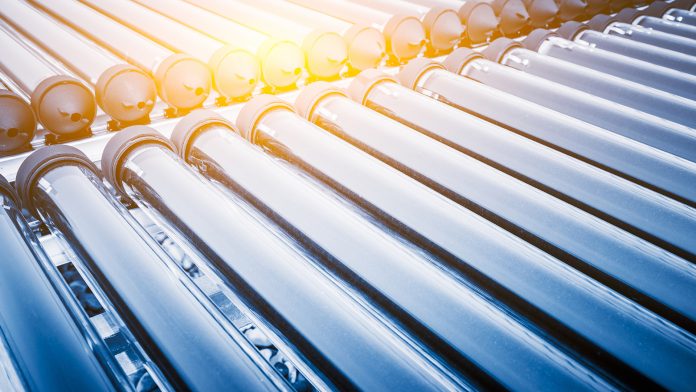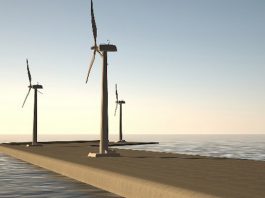A new study has analysed the potential of a novel sustainable energy storage system that incorporates pipes and anchors, possibly advancing the sustainable energy sector.
The research, led by Julian Hunt from the IIASA, has investigated the efficiency and performance of an existing – but obscure sustainable energy storage system called Buoyancy Energy Storage – adding to this established technology with pipes and anchors to enhance its potential.
The research is published in the journal Energy Storage.
Developing a proficient sustainable energy storage system is crucial for attaining a green, sustainable, carbon-neutral future for our planet, eliminating our dependence on burning fossil fuels for energy sustenance, lowering emissions. Currently, the biggest obstacle that still persists in optimising renewable energy useage is that, unlike the fossil fuels we’ve become accustomed to, their power output fluctuates dramatically. For example, solar power does not produce a regular output for the demand required, peaking in the day when it is less needed and plummeting at night when demand is highest.
To effectively attain any demand it is tasked with, renewable energy sources with fluctuating supplies of power will require a sustainable energy storage system to achieve this green transition smoothly, with Buoyancy Energy Storage Technology emerging as a favourable contender.
Hunt: “Buoyancy Energy Storage Technology (BEST) can be particularly useful to store intermittent energy from offshore wind power plants, especially in coastal regions and small islands. As an added benefit, the same technology can be used to compress hydrogen and transport it underwater.”
The inner workings of Buoyancy Energy Storage
Buoyancy Energy Storage is designed around a conventional pumped energy storage system – which is comprised of floating platforms situated in close proximity to offshore wind farms. This technology employs an electric motor/generator that achieves energy storage by lowering a compressed gas recipient, traditionally in balloons or tanks, to deep seafloors where it generates electricity by allowing the compressed gas recipient to rise through the water. However, the novel system developed by Hunt and his team utilises an array of vertically placed high-density polyethene (HDPE) plastic pipelines that form a cube, which is then mounted to the seafloor by an anchor system.
To test their system, the team operated a series of simulations to analyse what particular depths of the ocean is optimal for storing energy, with results signifying that the energy system stores higher quantities the deeper it is placed, as the volume of the compression gas varies less. Nevertheless, the team reiterate that installing these systems at lower depths will carry a higher cost, although this amount is still lower per megawatt-hour (MWh) in comparison to traditional battery systems.
“While the cost of batteries today is around US$ 150 /MWh, the cost of BEST is just $50 to $100 per MWh. Given that the cost of installed capacity for batteries is smaller than in BEST systems ($4 to $8 million per megawatt), battery and BEST systems could be operated in conjunction to provide energy storage for a coastal city or for an offshore wind power plant. It is important to also bear in mind that the cost of BEST systems can be significantly reduced if a substantial investment is made to the technology,” Hunt commented.
Further applications
The researchers have indicated that Buoyancy Energy Storage systems can be used to compress hydrogen for storage and transportation, helping to form an infrastructure for a future hydrogen economy, with one of the main barriers being these phases of the hydrogen chain. Data has shown that energy consumption during the compression stage could be greatly lowered with BEST systems, demonstrating a 30-times reduction in comparison to conventional compressors. In BEST systems, the hydrogen is compressed underwater, where it is then contained in a pressure tank and transported to the surface or other continents via underwater pipelines filled with sand. The pipe remains at the desired depth due to the sand reducing its floating capacity, where it can then be anchored to the ocean floor.
“Such hydrogen and sand filled pipelines combined with BEST systems have the potential to become the backbone that sustains the future hydrogen economy, connecting all continents,” Hunt concludes.









